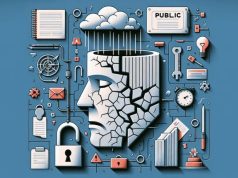In an era where the only constant is change, government agencies are often on the frontline, responding to crises that range from climatic upheavals to digital disruptions. Reflecting on significant crisis events in recent years, such as Hurricane Sandy’s wrath or the SolarWinds cyberattack, it’s evident that the public sector’s resilience is perpetually tested. Adaptive crisis management frameworks are not just desirable—they’ve become quintessential for the continuity of governance and public welfare.
Responding to a crisis effectively requires a dynamic strategy, one that incorporates lessons learned from past emergencies. After-action reviews of such crises reveal essential insights into operational weaknesses, enabling governments to turn theoretical plans into practical resilience measures. For instance, the COVID-19 pandemic unearthed the critical need for robust health infrastructures and rapid information dissemination protocols to deal with health emergencies at scale.
The cornerstone of any crisis management strategy is technology. Its role in predicting potential threats—be it via meteorological data analysis for storm predictions or cybersecurity AI that detects anomalies—cannot be overstated. But the power of technology extends beyond prediction; it’s a tool for coordination, enabling real-time data sharing between agencies, which can lead to a synchronized and more competent response. Moreover, social media platforms and emergency notification systems have transformed how the public receives warnings and guidance during crises.
Inter-agency cooperation is another critical factor. When departments collaborate, pooling resources, and expertise, the outcome is a cohesive strategy that serves the community more effectively. Exercises such as tabletop simulations can help forge these alliances in peace time, reinforcing the fabric of inter-agency relations which can prove invaluable during real-world emergencies.
Yet, all the technology and cooperation in the world would be inadequate without clear communication. Government entities must articulate their crisis strategies to the public with transparency and authority. In doing so, they not only inform but also build trust, ensuring that emergency directives are followed and minimizing the spread of misinformation.
How preparedness impacts the workforce and workplace cannot be discounted. Anxiety and uncertainty can cripple a workforce’s ability to respond unless they are adequately trained. Professional development programs that simulate crisis conditions—whether through drills, scenario planning, or resilience training—equip government employees with the confidence to handle emergencies. For the workplace, such initiatives mean creating an environment that prioritizes safety, encourages adaptability, and optimizes operations for any eventuality.
In conclusion, government sectors must evolve continuously to meet the demands of an unpredictable world. By learning from past crises, embracing technology, cultivating partnerships, and communicating effectively, agencies can bolster their crisis management capabilities. As for government employees, fostering a culture of preparedness ensures that when the unforeseeable strikes, they stand ready—not as individuals, but as a fortified collective capable of steering their community through the storm.




























